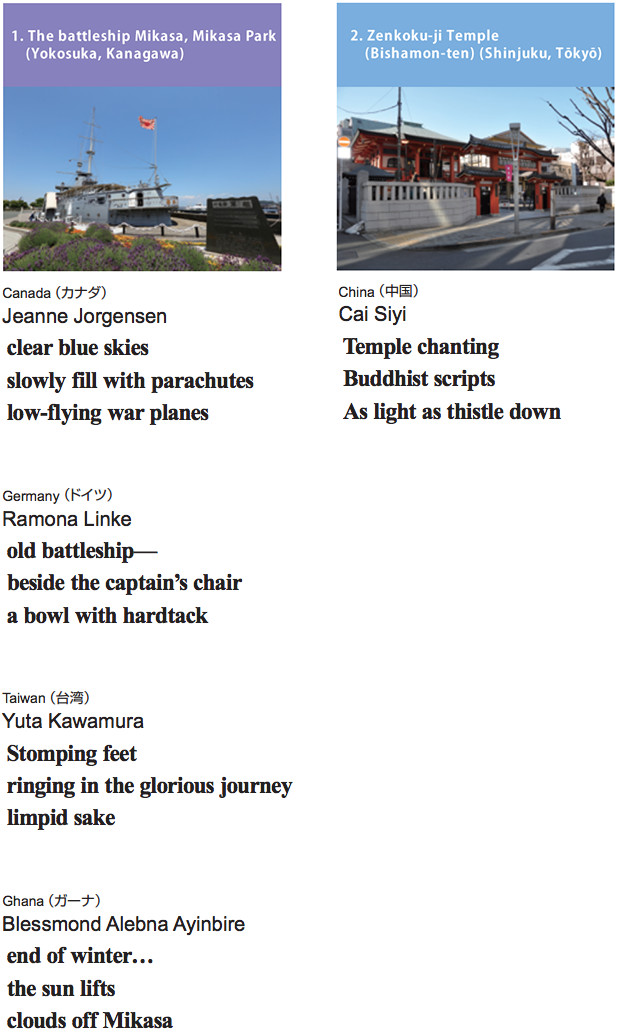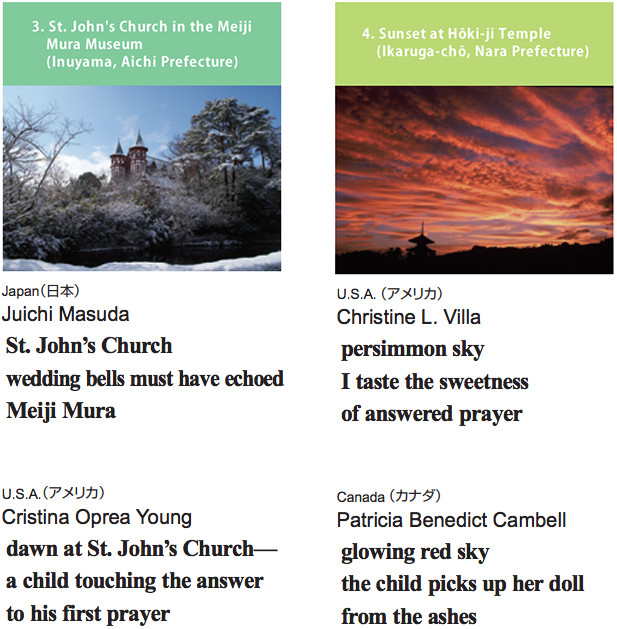Contest Comments by David McMurray
A record-setting 1,265 entries from poets in 41 countries vied for prizes in the 6th Setouchi Matsuyama Photo Haiku Contest.
202 haiku were submitted with photos taken by contestants in 33 countries for a new contest category which invited contestants to write a haiku in English for one of their own photos associated with the theme of the sea.
1,063 haiku in English were penned by contestants in 32 countries for photographs related to Matsuyama: the battleship Mikasa, Zenkoku-ji Temple, St. John’s Church, Hoki-ji Temple, the Japan Three-Day March, Atomic Bomb Dome, Matsuyama Castle, and Honmyo-ji Temple.
The Highest Award, two Excellent Awards, and 17 Honorable Mentions were selected for each of the contest categories. Congratulations go to all the haikuists whose participation contributed to the success of the contest.
The Highest Award
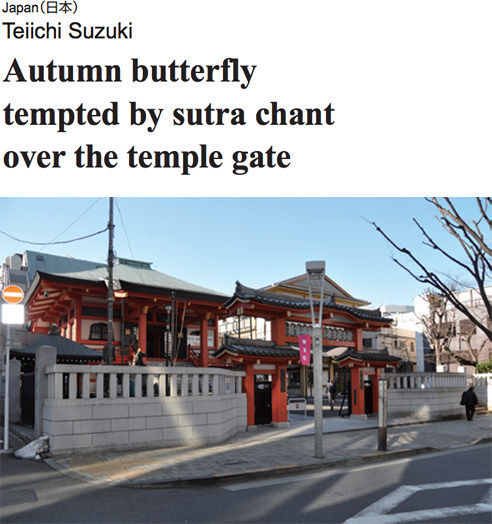
Judge’s Comment on the Haiku
This peaceful poem alludes to Natsume Sōseki’s literary works depicting human activity, beauty on Earth, and the lure of heaven. In a haiku moment that is neither overly descriptive nor impossible to imagine, monks at Zenkoku-ji Temple successfully coax a butterfly to their somber side of the gate.
The butterfly’s path counterpoints the comic novel Botchan (1906) in which the protagonist was unsuccessful in luring a carp from the water during a festival at Bishamon-sama, and in Mon (1910) when the hero was unable to open symbolical gates of enlightenment.
A challenging photograph, it attracted the least competition -- just 92 poems -- but the winning haiku scored the highest of all 1063 entries for its creativeness, traditional elegance, form within 17 syllables, adherence to the contest set theme, imaginative portrayal of the photograph, a sorrowfulness, and “aha” moment.
An avid traveler, photographer, and member of the Semboku HaikuBird group, Teiichi Suzuki recently published Haiku Collection Haiku in English 2015—2016.
Award for Excellence
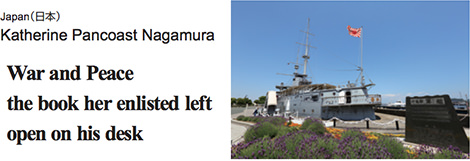
Judge’s Comment on the Haiku
This excellent haiku pulls at the heartstrings of mothers and wives around the world who pine for a loved one gone to sea. Penned in 1869 by Leo Tolstoy the novel War and Peace could very well have been read in the present by a navy officer. Or imaginatively, by a Russian sailor in the past when the well-read naval strategist Saneyuki Akiyama served on Admiral Togo’s flagship in the Russo-Japanese War of 1904–1905.
Born in America, and living in Japan for more than 25 years the haikuist works with NHK World’s Haiku Master series and recently won a prize in the ITO EN Oi Ocha haiku contest. A photographer, she goes by the nickname Kit.
Award for Excellence
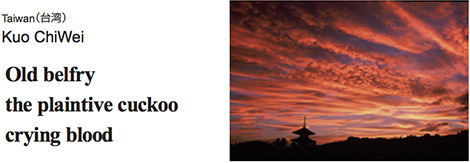
Judge’s Comment on the Haiku
This photo gave the haikuist an opportunity to juxtapose a blood-colored sunset over Hoki-ji Temple with the haunting sound of the hototogisu bird. The Chinese speaking haikuist borrowed deeply from the sentiments of Masaoka Shiki who composed a Chinese poem in his fifth grade at school about a bird coughing blood. The plaintive cuckoo is the common name for the Cacomantis merulinus bird species found in China where Shiki worked later as a war correspondent in 1895. Shiki chose his penname, inspired a haiku journal with the name, and described his own coughing affliction from tuberculosis based on his associations with the plaintive cuckoo.
Kuo ChiWei who goes by the penname Kiwi, a flightless bird, is a photographer and graduate student in Kyushu who was likely reminded of his own hometown when he entered this contest.
Award
